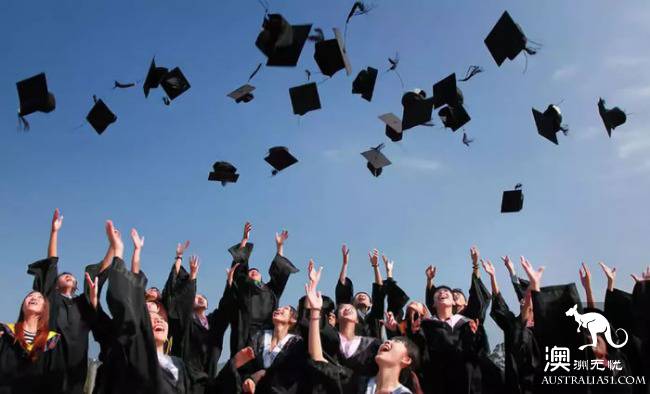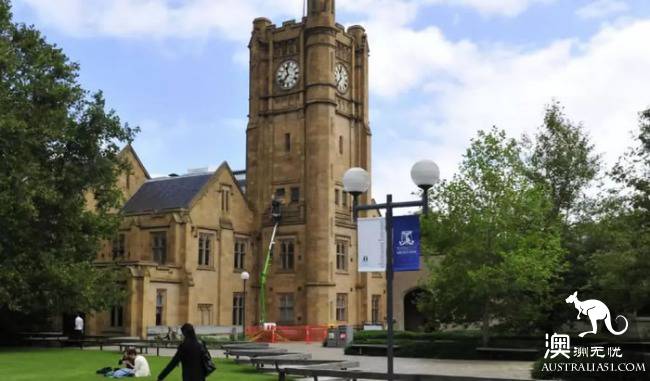Australian universities are increasingly dependent on overseas students and educational institutions have to reassess the risks posed by the high concentration of the market, the New State Audit Office reported.

Chinese students become "money cow" in Australian colleges and universities
In 2017, the total income of Australian universities and colleges grew 23% from overseas students. Now, the army of overseas students has contributed A $2.8 billion to universities in the new state, accounting for 28% of the total income of the education sector. Chinese students contributed the most, accounting for 54%, followed by India and Nepal.
The Audit Office warned that universities need to weigh their dependence on these students.
According to the report, new state universities rely heavily on students from a single country of origin, increasing Australia`s sensitivity to economic or political changes in countries where foreign students live, and need to reassess the risk of market concentration.
The majority of overseas students are concentrated in several countries, leading to a significant increase in the dependence of new state universities on foreign students from these countries.
The data shows that 37% of the total tuition income of NSW`s colleges and universities comes from students from four countries. There is a university, and as many as 71% of overseas students have tuition income from the same country - China. In this way, Chinese students have become a "cash tree" of Australian universities.
Although the audit limited its statistics to the new state, financial department data showed that the phenomenon of "thighs" of foreign students in colleges and universities was not an individual case.
In 2016, overseas students contributed A $6.2 billion to the total income of Australian universities. Victoria had the largest share, at A $2.1 billion.

The tightening of policies may lead to pain in colleges and universities
Andrew Norton, director of the (Grattan Institute thinktank) higher Education Program at the Gratham Institute, an independent think-tank, says that in fact, every university is aware that the income earned through international students is not guaranteed. The biggest risk is that the size of Chinese students is so uncertain that a tightening of foreign policy on either side of China or Australia could lead to a drop in student numbers.
"I believe they understand the risks of dependence," Norton said. The prosperity of the Chinese overseas student market may not last forever, and it may be that the Chinese army of studying abroad will withdraw from Australia sometime, which is a big blow to the profitability of Australian colleges and universities. "
The New State Audit Office found that government aid fell 6.4 percent of total revenue over the past five years. In 2017, Australia`s government froze federal subsidies, forcing some universities to expand other sources of income and costs.
"Universities are already expanding other sources of income to reduce their reliance on government subsidies." The auditor says. "in the past five years, the fastest growth in income has come from overseas students."
`you can`t blame the university, `says Adrian Piccoli, a former new state education secretary and now head of (Gonski education research centre at the University of NSW) at the Gunsky Educational Research Center at NSW University. Today`s university is not only an educational institution, but also a profit-making institution. It needs to make business decisions.
In fact, even with additional federal grant funding, I don`t think international student growth, or college dependence on international students will be reduced, universities will not watch this "big cake", after all, it represents extra income. And these overseas sources of income, in the national interest, are good for the economy as a whole.
But the freeze does have a negative impact on universities in small and remote areas. The audit report shows that while investment from overseas students is rising sharply, the distribution is uneven.
Two new state universities, the University of Sydney and the University of New South Wales, earn more than 50 percent of total income from overseas students.
Also at the University of Victoria, Melbourne, Monash University and Melbourne Institute of Technology, overseas students contribute about 40% of total revenue.
But some of the more geographically biased universities are the University of New England and the University of Newcastle, the only two universities in the new state that account for more than 45% of total income from government grants and are under further pressure due to a freeze in federal funds.
Adrian Piccoli says these colleges are in a difficult position. Because if they can`t control their income, they have to control costs, which could mean cutting some funding for research or education projects.

